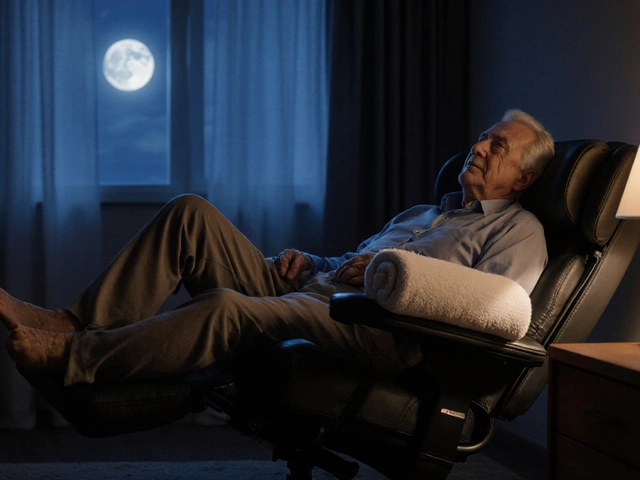If you’ve ever stared at your tired sofa and wondered, “Is it time for something new?” you are not alone. Most people don’t really know if they’re keeping their stuff too long or swapping it out too soon. Turns out, there’s no magic date when every piece falls apart. But let’s face it, nobody wants a saggy mattress or a table that wobbles at family dinner. Money, style, and durability all play their part, too. The choices matter more than you think—not just for your comfort, but for your health, happiness, and even your wallet.
What Impacts How Long Furniture Actually Lasts?
There isn’t a single number that works for everyone. A sturdy oak dining table outlives a cheap flat-pack desk by a mile. Materials make a huge difference: real wood laughs at particleboard when it comes to durability. Solid oak or walnut tables often last 30 years (or more), especially if you take care of them. On the flip side, MDF, plywood, and chipboard are more budget-friendly, but expect loosening joints and scuff marks way sooner—sometimes within five to ten years.
Don’t forget about what’s beneath the surface. Sofa cushions lose their shape, fabric pills, foam gets lumpy, and springs can poke through—or go squeaky. The classic wisdom: a good-quality sofa makes it 7-15 years, depending on daily abuse from kids, pets, movie nights, and pizza stains. Leather holds up longer but craves conditioner and cleaning. Mattresses, crucial for your sleep, are another big one. Mattress companies used to push 10 years as the standard, but studies in 2022 showed that most people will notice sagging and aches as early as year seven. The Better Sleep Council recommends swapping beds every 7-10 years, or sooner if you’re waking up achy.
Let’s talk chairs. Office chairs collapsing mid-Zoom-call is an all-too-real fear. Office chairs made with metal bases and mesh last up to a decade; cheaper plastic or vinyl knock-offs might not make it three years. Look underneath: if you see heavy-duty steel hardware, that’s a green flag. Soft seating (think living room armchairs) hits the 7-10 year mark for most people. And storage furniture? Bookcases made from thick, solid wood can take decades of load. Particleboard shelves sag fast, and some experts say replace them after five to seven years, especially if you move a lot or rearrange your books often.
Then there’s climate. Humidity warps wood, while dry air cracks it. Living near the coast? Salty air is rough on everything. Air conditioning sometimes helps, but nothing saves cheap glue joints from falling apart in a muggy, steamy place.
How to Tell When It’s Time to Replace Different Types of Furniture
While there’s no one-size-fits-all answer, there are plenty of warning signs. Listen for squeaks, groans, and sags. Try this: if it feels more like sitting on a trampoline than a couch—time to go shopping. With dining chairs, check for wobbly legs, faded upholstery, and splinters you never remembered scraping before. And if you have to tighten screws more often than you vacuum under the table, that’s a red flag.
Mattresses give away their age with sagging spots, visible lumps, or waking you up with back pain. In fact, a study from the Sleep Foundation in 2023 found that switching to a new mattress after 7 years can cut morning stiffness by up to 70%. Sofas are usually more forgiving, but when you can see the imprint of your nap carved deep in the cushion, the end is near.
Storage furniture can be sneakier. Drawers that stick, shelves that lean, or any sign of mold or odd smells: don’t wait too long. Bookcases that creak or tip with a gentle push are basically time bombs. Swap them out before your favorite novels end up in a heap. Desks and work tables feel wobbly? Time to replace, or at least repair. Shaky surfaces kill productivity, and a solid surface saves your sanity in home offices.
The finish is a big clue, too. Peeling veneer, sticky spots, or bubbling paint isn’t just ugly, it points to sun damage or water damage. Water rings that never clean up sometimes mean the wood underneath is starting to rot. That’s not just cosmetic—it’s structural.

Tips for Making Furniture Last—and Spotting Quality Pieces
If you want to avoid the cycle of buy, replace, toss, repeat, buy smarter from the start. Here’s what actually matters: weight, joinery, and materials. Heavy furniture doesn’t always mean quality, but a feather-light bookcase almost never lasts. Check joints for dovetails or dowels rather than simple glue or staples—they hold up better to rough use and heavy loads.
Look for finishes that feel smooth but not sticky. Veneers are fine, just make sure they’re not paper-thin and flaking at the corners. Open drawers: glides should run smoothly, and the bottoms shouldn’t flex when pressed. For sofas, removable cushion covers are a godsend, especially with pets or kids. High-density foam lasts longer than cheap ‘poly-fill’ stuffing.
And maintenance? A little goes a long way. Flip and rotate sofa cushions and mattresses every few months. Wipe down surfaces regularly, and don’t let wet glasses sit on wood (use coasters—seriously). Tighten screws whenever you notice a wobble, and oil moving parts like hinges. For leather, conditioning twice a year prevents cracks. Throw washable slipcovers over fabric sofas to cut back on deep cleaning.
- Keep furniture out of direct sunlight to reduce fading and warping.
- Avoid dragging heavy pieces; lift or use felt pads to protect both furniture and floors.
- If you have indoor plants, watch for water spills causing rot—use trays or mats.
- At least once a year, do a full check for loose hardware or damage.
Don’t fall for trends that burn out in a year. Instead, go for timeless designs that fit your life, not only your feed. Multifunctional furniture—sofa beds, extendable dining tables—keeps up longer as your needs change, so you replace less frequently.
When Should You Actually Go Furniture Shopping?
Here’s the million-dollar question: how often should you actually replace your furniture? For most homes, it all comes down to the piece and how it holds up. Mattresses every 7-10 years keeps your body happy. Sofas and armchairs follow the same timeline if they see daily use. Dining sets—if made well—can go 15-30 years, though reupholstering chairs might stretch their life (and freshen up your dining space) without buying all new. Office chairs usually need replacing after about 7-10 years, unless they’re top-tier ergonomic models that age gracefully.
Storage furniture runs a wide range, but for low-cost units, five years is a good rule of thumb. Invest in quality wood? They could stay in your family for three decades, or longer. Fast fashion has reached furniture, too, causing more waste: in the U.S., the EPA reported in 2024 that over 12 million tons of furniture were sent to landfill—most poorly made and less than 10 years old. Buying smarter the first time makes a huge difference to the planet and your budget.
There are also life milestones—a new baby, kids growing up, moving into your first place, getting married, or downsizing. If your lifestyle changes, your furniture often should, too. Adjustable beds, modular sofa sets, expandable tables—all these adapt with your life. Don’t wait for things to wear out if your needs have outgrown them.
Lastly, shop for deals if you can plan ahead. Big-ticket pieces hit their best prices during holiday weekends or end-of-season clearances. September—and just after Christmas—are usually the sweet spots for sales. If you love a bargain, keep an eye on local stores’ floor model clearouts or online marketplaces for gently-used, quality furniture. That’s a smart way to stretch your dollar, and sometimes find better stuff than you’d get new.
End of the day, how often you buy furniture is totally up to your finances, comfort, style, and life stage. The trick is to pay attention to how your stuff holds up, not just what a decorator says is “in” this year. Buy for the life you have, and replace only when your comfort—physical or emotional—says it’s time.





